The definition of performance assessment
Performance assessment is a method of evaluation that necessitates the students to complete a task instead of picking an answer from a convenient list (Gifford & O’Connor, 2012). Knowledgeable raters such as tutors or other qualified employees then critic the quality of the student’s effort founded on a prearranged set of criteria (Kane & Mitchell, 2013). This method of assessment is extensively used to directly evaluate the writing skill relying on the writing given in by the students conform the assessment commands (Gronlund & Waughn, 2012).
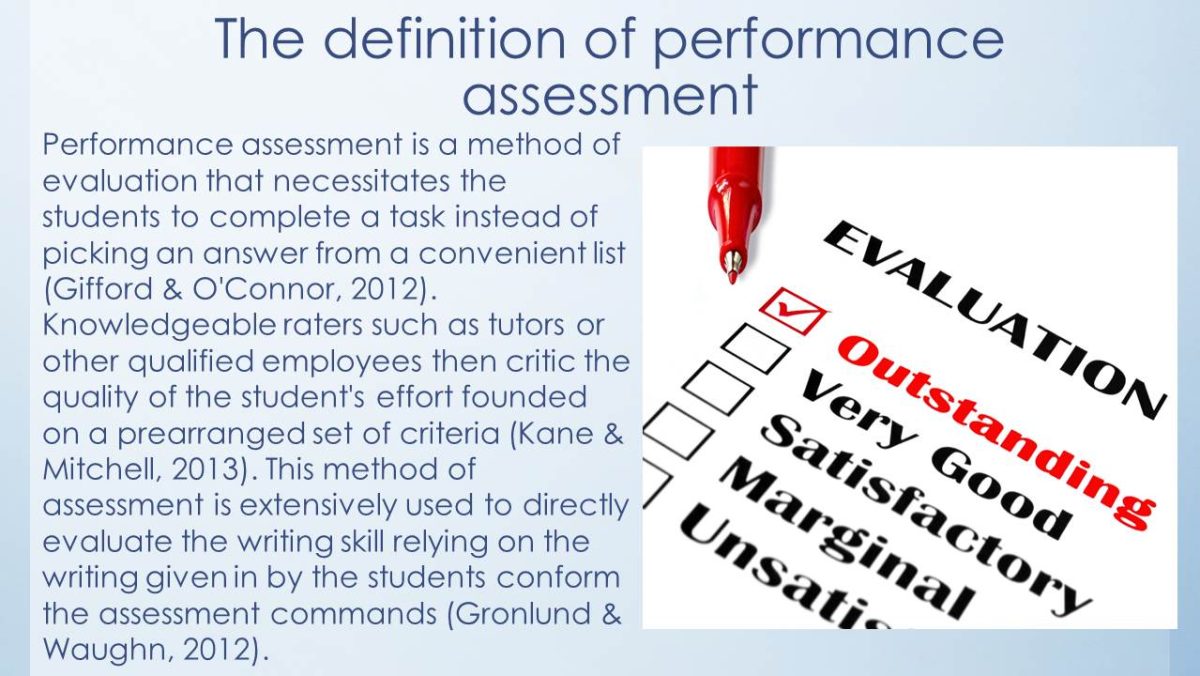
Why we use it
Performance assessment is used for the reason that it entails students to enthusiastically show the level of their knowledge (Khattri & Reeve, 2012). A teacher should define what the task demands and the norms that will be used to assess the students’ performance. This entails a watchful explanation of the fundamentals of a decent performance, and permits students to critic their own work as they advance.
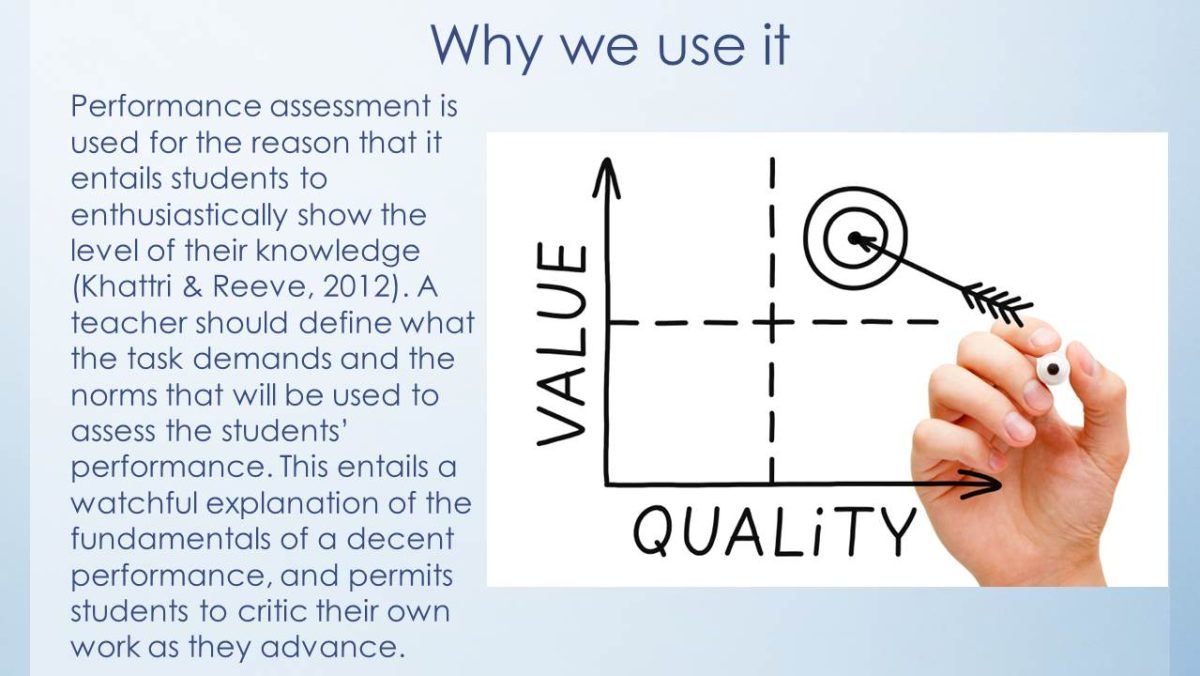
Advantages. Disadvantages. Examples
Advantages
- Performance assessment can offer motivation for an enlightening education.
- It can also upsurge the students’ acknowledgment of what they have to know and be capable of doing.
Disadvantages
- A substantial amount of time and attention should be set apart for the development and use of performance assessment.
- Evaluation events that are detached from the regular educational routine can be seen as interruptions by the students.
Examples: For instance, a student may be requested to explicate a certain historical event, produce a logical theory, resolve a mathematical test, speak a foreign language, or conduct a study on a given subject (Lang, Stanley, & Moore, 2013).
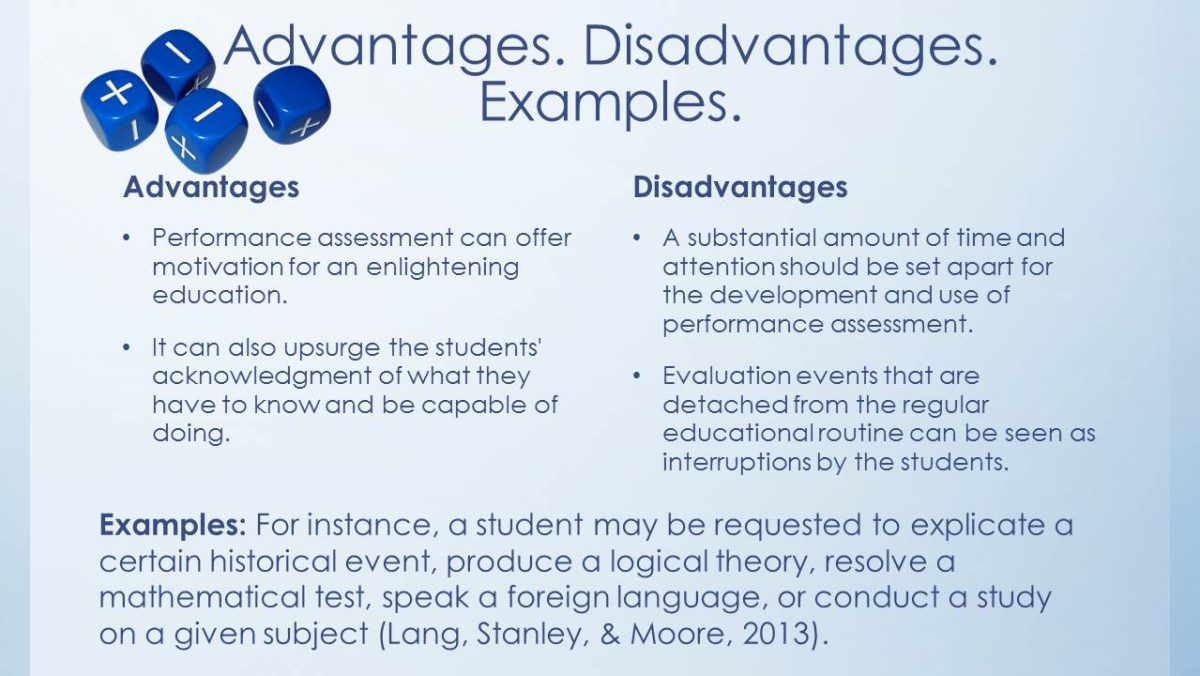
The steps of creating a performance assessment
- Set the purpose (Moss & Brookhart, 2012);
- Hand-pick the objectives;
- Plan the task;
- Reflect on the organization of the evaluation (Moss & Brookhart, 2012);
- Formulate the scoring norms;
- Establish the key values or grading gauges (Moss & Brookhart, 2012);
- Grasp the results.
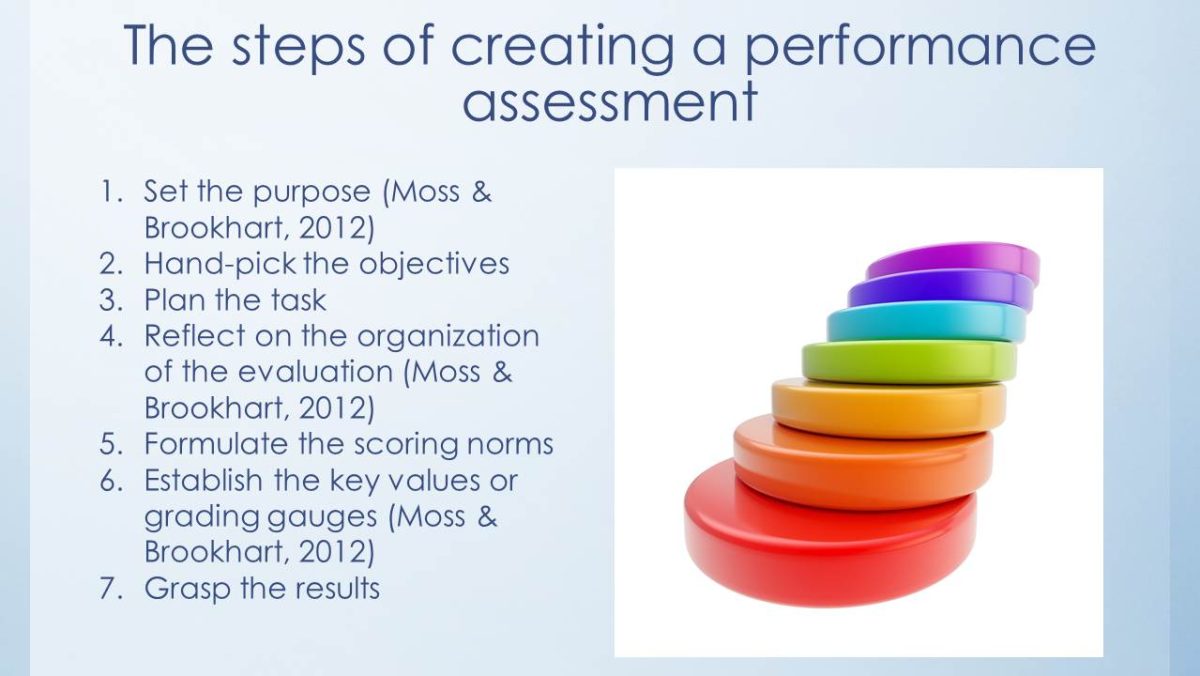
Introduction to the assessment
Standard: Comparison task.
Goal: Help the students realize the concept of categorizing items.
Objective: Enhance the students’ critical thinking and develop their ability to rationally describe and categorize the items.
Expectations: The students are expected to understand and successfully apply their knowledge to perform the task.
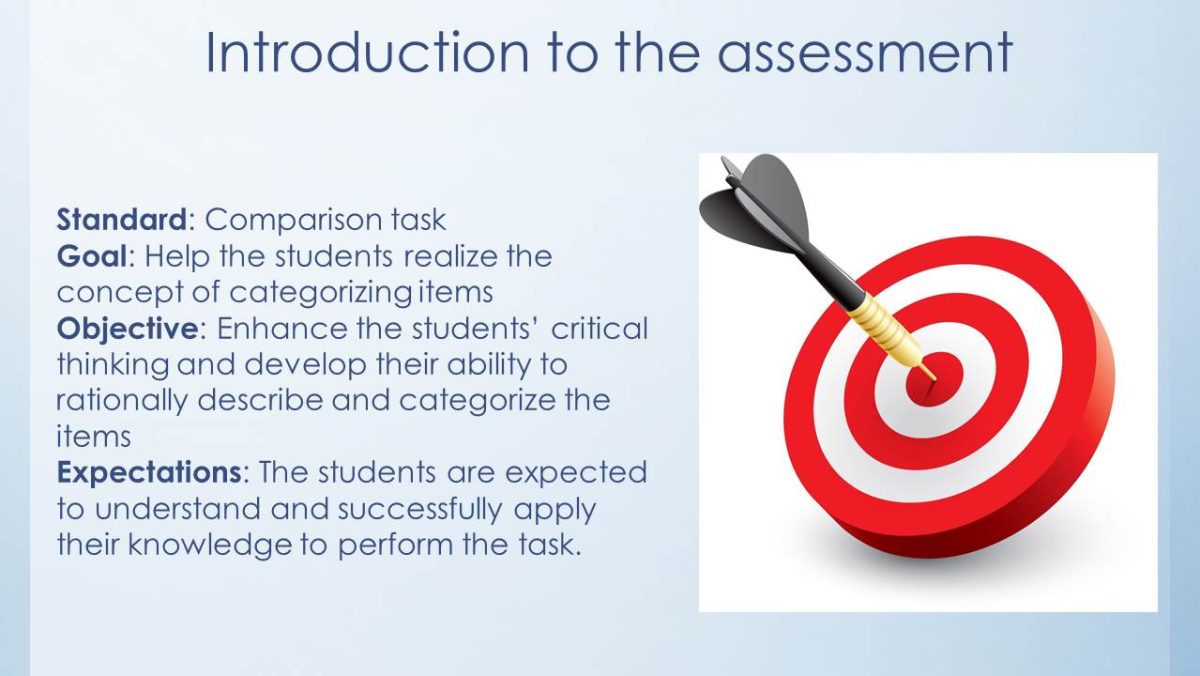
Performance assessment
Working in pairs, list as many animals as possible. Think of a classification that would accentuate the key characteristics of each class and place the animals in the appropriate category.
⇓
Accurately refer to a number of sources that would provide you with the necessary information concerning the accurate classification. Look through these sources to find as many animals that are eligible for the classification as possible.
⇓
Explain to the class the peculiarities of your classification and the things that you discovered in the process of research and categorization of the animals.
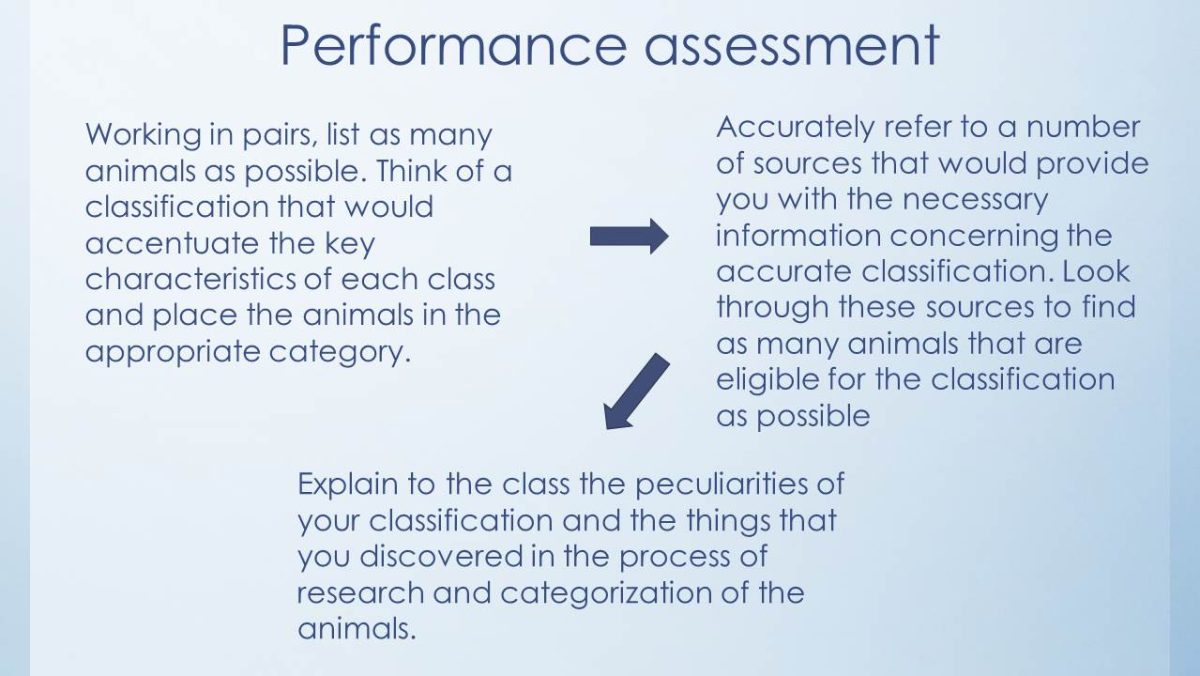
Time allocation and assessment criteria
You will be assessed on:
- Your understanding of the distinctive features.
- Your ability to specify the key characteristics.
- Your ability to accurately categorize the animals.
- Your ability to efficiently use various sources of information.
Time frame: 40 minutes.
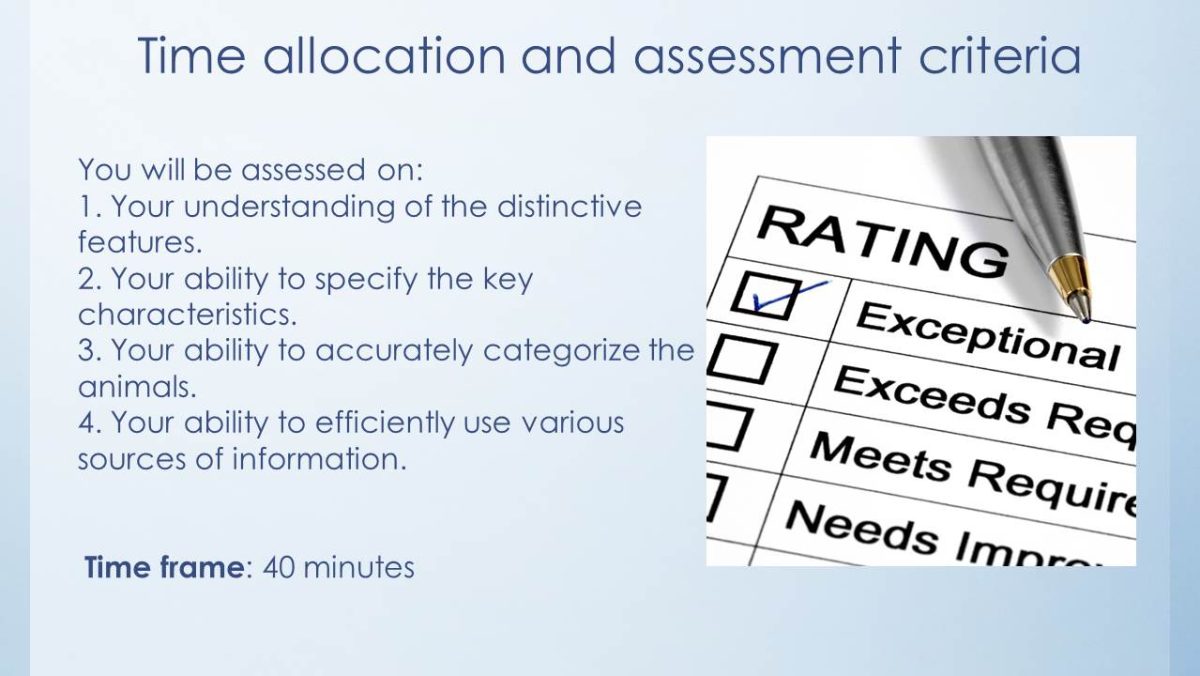
References
Gifford, B. R., & O’Connor, M. C. (2012). Changing Assessments: Alternative Views of Aptitude, Achievement, and Instruction. New York, NY: Springer.
Gronlund, N. E., & Waughn, C. K. (2012). Assessment of Student Achievement. New York, NY: Pearson.
Kane, M. B., & Mitchell, R. (2013). Implementing Performance Assessment: Promises, Problems, and Challenges. New York, NY: Routledge.
Khattri, N., & Reeve, A. L. (2012). Principles and Practices of Performance Assessment. New York, NY: Routledge.
Lang, S., Stanley, T., & Moore, B. (2013). Short-cycle Assessment: Improving Student Achievement Through Formative Assessment. New York, NY: Routledge.
Moss, C. M., & Brookhart, S. M. (2012). Learning Targets: Helping Students Aim for Understanding in Today’s Lesson. Alexandria, VA: ASCD.